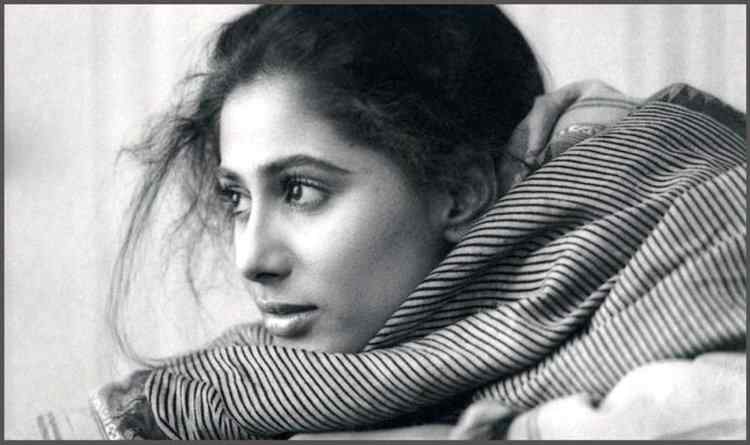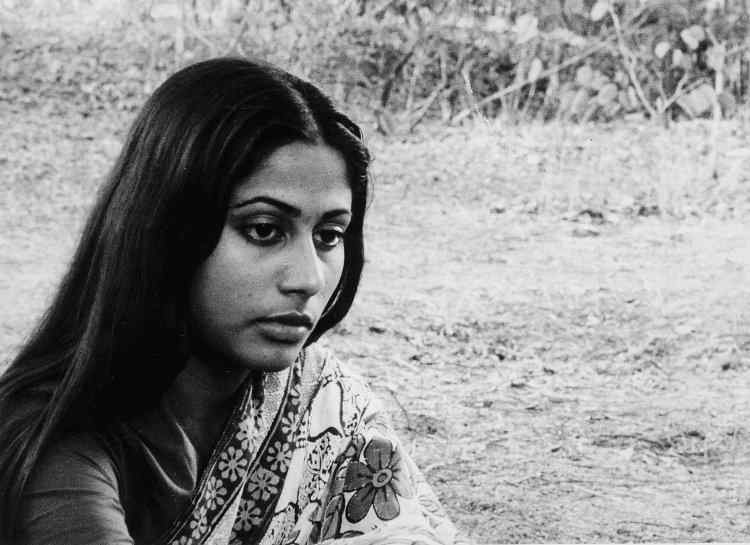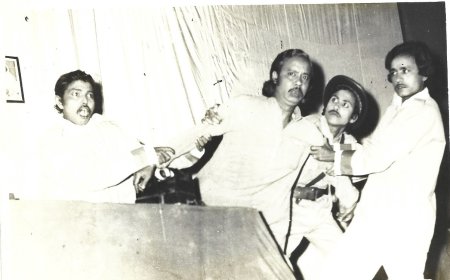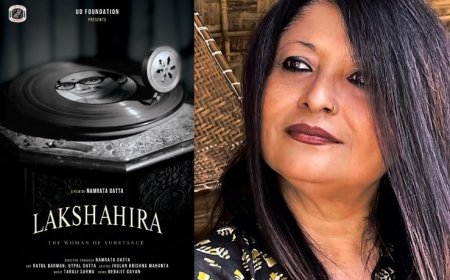Birthday Tribute: SMITA PATIL (1955 – 1986)
In observance of Smita Patil's 68th birthday, Dr. Shoma A. Chatterji has written a commemorative article to pay tribute to her distinguished legacy.

Had she lived this long, Smita Patil would have celebrated her 68th birthday on 17th October this year. But Death snatched her young, when she had lots to give to Indian cinema. She had just become a mother, a cherished dream for an actress who had spent a major part of her youth under greasepaint facing the arc lights. But she has left herself behind in bits and pieces, through her screen characters and through her performances in umpteen films in a career roughly spanning a little more than a decade. She is the first Indian actress to have had the prestige of two retrospectives of her films in France in 1984. Her films were screened both at the La Rochelle Film Festival and at the Cinematheque Francais. Yet, her reaction to the news was the most unassuming in a world where blowing one’s own trumpet is part of the rat-race. “Maybe it was just luck, or maybe it was the rapport I had established with the French organizers when I had gone there for festivals earlier…I do not know why they picked me and not anybody else,” she said.
A talent that revealed itself much after her death was that Smita was an excellent photographer. Her sister Manya, founder of the Smita Patil Memorial Foundation, managed to put together a collection of Black & White photographs Smita had taken during her location shooting stints and even at home. They were not only candid and refreshing, but offered an unusual point of view of their author. These were shown at an exhibition at the NCPA’s Gallery of Photographic Art in Mumbai.
Her career in mainstream cinema proved once and for all, that she was not quite cut out for the mainstream. Her histrionic skills were very subtle and low-key. She drew the “fire” of anger from within in the final scenes of Ketan Mehta’s Mirch Masala where the last shot shows are glaring into the camera. Except for a couple of films such as Namal Halal and Shakti, both opposite Amitabh Bachchan, Smita was a total misfit in commercial films. She could not dance to save her life. She lacked the glamorous screen presence her peers in the mainstream had. She looked incredibly incongruous, almost pathetic, in Prakash Mehra’s Gunghroo. She nonchalantly announced that she wanted to be rich, adding that it was not possible to be rich unless she worked in mainstream films. She did become rich with a flat in Mahim, another one in the Western suburbs to finally top it all with a bungalow, the ultimate in cinematic success. Yet, the stubborn audience refused to accept her. Her roles in the ‘other cinema’ continued to hold the more discerning audience enthralled.

Image: Smita Patil Image Courtesy: Manya Patil.
She did some middle-of-the-road films too such as Aaj Ki Awaz under the BR banner, Aakhir Kyon opposite Rajesh Khanna, Jawab plus a few more films opposite Raj Babbar. And Smita found herself helplessly in love with a married man. She defied the traditional, middle-class mores her parents had instilled in her. She defied them too, since they did not approve of the liaison. But the happiness was short-lived not only because of the sympathy wave for Raj Babbar’s wife Nadira and their two children, but also because Smita died a few weeks after she gave birth to Prateek, her son rose to a crescendo with help from the media. With her ‘marriage’ to Raj Babbar, Smita Patil only proved that she was as emotionally vulnerable as any other woman would be in the given circumstances. Prateek is now a handsome hulk of a very good actor but is not exactly flooded with assignments.
This will-o-the-wisp girl from Pune who could not speak a word of English found herself lost in the snooty environs of Mumbai’s Elphinstone College. The same girl, seeking friendship, switched over to St. Xaviers to suddenly find herself reading the Marathi news on Doordarshan. When Shyam Benegal saw her on the small screen, he felt the girl had a very mobile face and cast her in his new film Nishant. But he must have seen the talent hidden behind that dusky face and sensuous voice to cast her as the central lead in Bhoomika followed by Manthan. Her earthy looks, dusky skin, svelte form, elegant neck and mobile voice gave her the fluidity of slipping under the skin of the Amma in Rabindra Dharmaraj’s Chakra as easily as it vested her with the smoothness of merging with the emotionally insecure and hyper Kavita in Mahesh Bhatt’s Arth.
The tribal wood-gathering woman in Govind Nihalani’s Aakrosh, or the social worker with her silent rebellion in Dr. Jabbar Patel’s Subah, the committed actress in Mrinal Sen’s Akaaler Sandhaane, the woman who aroused the women of an entire village in rebellion against a single man in Ketan Mehta’s Mirch Masala, the victimized mother in Utpalendu Chakravarty’s Deb Shishu, the crippled woman with a mind of her own in Sayeed Mirza’s Albert Pinto Ko Gussa Kyon Ata Hai, the adulterous wife in G. Aravindan’s Chidambaram, the strange metaphor of Sita in Kumar Shahani’s Tarang, the angry wife of the untouchable in Satyajit Ray’s Sadgati are just a few examples of the versatility of this gifted actress. She did not try and find out if it was luck that had favoured her over talent and hard work. She worked very hard, bringing into her performance, the effortlessness that comes only through long experience or professional training. Smita had neither.
Few who know her as an incomparable actress are aware of the fact that somewhere along the way, Smita found herself deeply involved with a women’s organization in Mumbai. It was one of the first women’s centres in the city that offered succour to women in trouble, women thrown out of their homes, victims of domestic violence, and so on. She did all she could to place the centre on a financially stable footing. With the help of her fame and her industry contacts, Smita organized a charity screening of her film Umbartha. The proceeds from the show were ear-marked for an independent apartment for the Women’s Centre’s office. But with the entry of Raj Babbar in her life, Smita was delicately poised in a tightrope walk between her personal beliefs about the wronging of the woman and her personal involvement with a married man.
Her life may be compared with that of Sulabha, the character she portrayed in Jabbar Patel’s Umbartha in Marathi (Subah in Hindi.) Through her journey, Sulabha creates, invents and redefines the concept of “home” and “family” not only of a person but also of the person’s existence in a given place which might be as ambiguous and ambivalent as it might be uncertain and, amoeba-like, growing in every direction in every which way till one fails to pin it down with a definite identity except an essentially self-defined one.
With two Urvashi Awards (National Award for Best Actress) behind her, two French retrospectives, a bunch of the best films in Indian cinema made around that time, Smita Patil lived the most fulfilling life she could have, within the brief span of her 31 years, the age she died in. It is the quality of life that matters, the quality of time you have spent in this world that counts and that is what people like Smita Patil have proved time and again. Like Anand in the Rajesh Khanna-starrer, film, she exemplifies the statement, “zindagi badi honi chaahiye, lambi nahin.”
***
What's Your Reaction?


































































